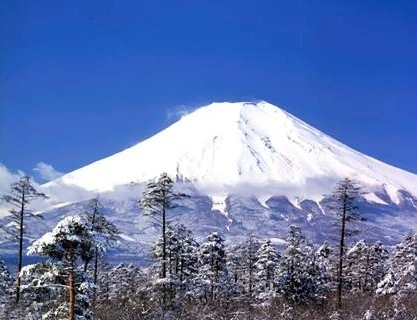Fuji (mountain) - geography.
Publié le 04/05/2013
Extrait du document

Fuji (mountain) - geography. Fuji (mountain) or Fujiyama, also Fuji-san, celebrated dormant volcano of Japan, southern Honsh? Island, near Tokyo. Fuji, the highest mountain in Japan, rises as a cone to a height of 3,776 m (12,387 ft) above sea level, with the apex broken by a cone-shaped crater 610 m (2000 ft) in diameter. The southern slopes extend to the shore of Suruga Bay, and the isolated peak can be seen from many of the outlying prefectures. The mountain is part of Fuji-Hakone-Izu National Park, the most popular vacation area in Japan. According to legend, Fuji arose from the plain during a single night in 286 BC. Geologically the mountain is much older than the legend asserts. The most recent recorded eruption of Fuji lasted from November 24, 1707, until January 22, 1708. Certain religious sects regard the mountain as a sacred place. Fuji is visited annually by thousands of pilgrims from all parts of the country, and numerous shrines and temples are on its slopes. Fuji is also revered in Japanese literature and art (see Japanese Art and Architecture). Microsoft ® Encarta ® 2009. © 1993-2008 Microsoft Corporation. All rights reserved.
Liens utiles
- Fuji (mountain) - geography.
- Mountain - geography.
- Sierra Madre (mountain range, Mexico) - geography.
- Mountain - Geography.
- Sierra Madre (mountain range, Mexico) - geography.































